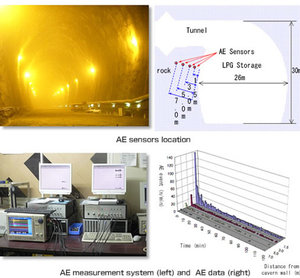

When designing underground structures there is a large amount of uncertainty due to a large number of factors:
- Uncertainties in the geomechanical parameters
- Large simplifications made to model the ground and the natural stresses
- Limitation of geological-geotechnical explorations due to financial reasons
This is why there is the need of a system of control that enables us:
- To check during the construction the hypothesis that were taken during the design, verifying that the computational predictions of the behavior of the ground correspond to reality. If deviations arise and these are too large, then a back analysis of the input parameters is made.
- To detect in advance imminent damages or collapses, allowing to take measures on time
In order to establish a control system, monitoring of different parameters is made by means of different techniques and tools:
| Parameter recorded | Tool |
|---|---|
| Settlement at the surface | Levelling |
| Displacements and convergences in the opening skin | Tachymeter, tunnel scanner, extensive tape, etc |
| Displacements within the rock mass | Extensometers , sliding micrometers, inclinometers, deflectometers |
| Stresses on support | Pressure cells |
| Strains on support | Strain gauges |
| Primary or natural stresses in the ground | Hydraulic fracturing, unloading drills, |
More info:
- Tunnels and shafts in rock by US Corp of Engineeers (Adobe Pdf 6mb)
